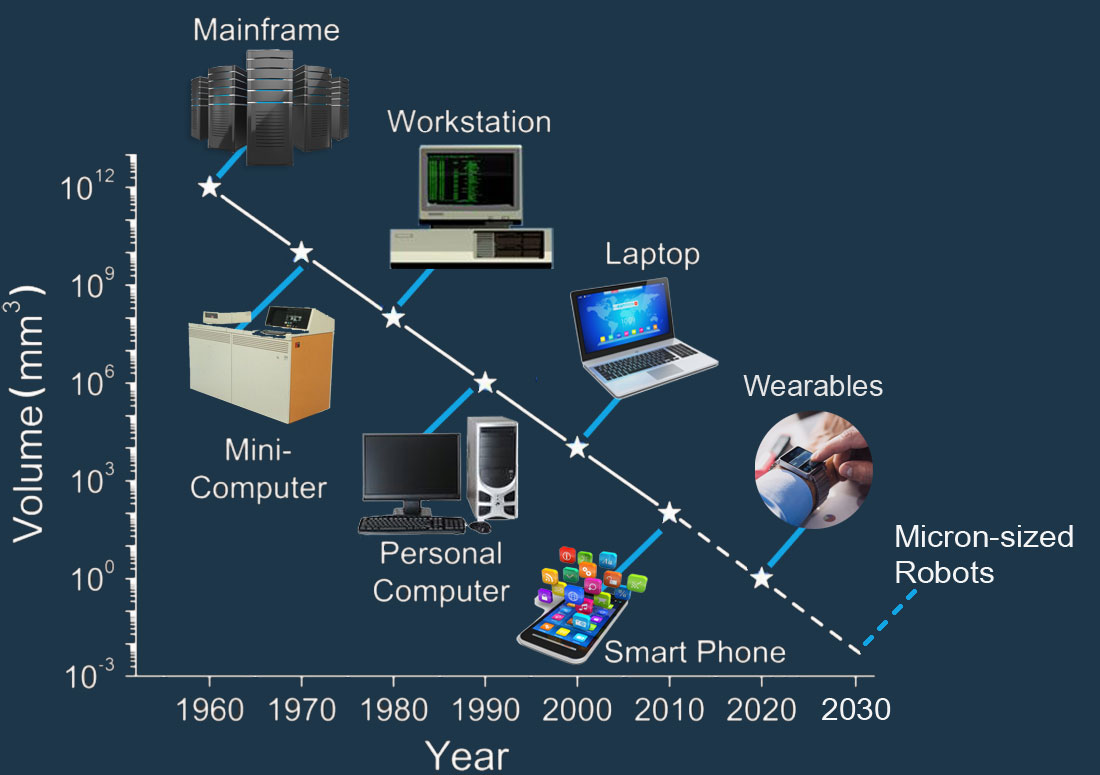Smart systems incorporate functions of sensing, actuation, and control in order to describe and analyze a situation, and make decisions based on the available data in a predictive or adaptive manner, thereby performing smart actions. In most cases the “smartness” of the system can be attributed to autonomous operation based on closed loop control, energy efficiency, and networking capabilities.
The computer industry has gone through several phases characterized by different computer classes: Mainframes, then PCs, mobile phones and—most recently—wearable and IoT devices. All these computer classes emerged and grew, but they were subsequently replaced by the next generation of computers [1].
This trend also applies to the technology classes on which computers are based: A new technology class differs from its predecessors by serving an overall addressable market that is 10 times larger than the previous one, and by achieving 100 times the density and efficiency at 1/100th of the former cost.
This is why future supercomputers will be based on technology classes that work with the tiniest of systems: Wearables and IoT devices. Owing to the larger addressable market, these devices will mature faster than former technologies and eventually replace them.
Smart systems include sensing and intelligence that understands a situation. They will make predictive and adaptive data-driven decisions and perform smart actions. The cognitive intelligence of such systems is built on energy-efficient autonomous operation, closed-loop control and communication functionalities.
A major challenge is the integration of many diverse components that combine different technologies and materials. The focus is on services for particular applications, for example in the healthcare and automotive sectors.
The term “smart” reflects the embedded processing capability as well as the full awareness of the environment that becomes possible with the introduction of sensing capabilities, thus bringing together interdisciplinary technologies and solutions.
